



A GUIDE TO UTERINE FIBROIDS AN ALTERNATIVE TO BLOOD THINNERS SAFETY FOR SNOWY DAYS Winter 2023healthytogether
Publication of COOPERMAN
MEDICAL
SAINT BARNABAS MEDICAL CENTER BETTER WOMEN’S HEALTH AT EVERY AGE
A
BARNABAS
CENTER Formerly
As we enter into 2023 with a renewed sense of purpose, accomplishment and optimism, it’s a great time to focus on getting and staying healthy by making preventive care a priority. And we’re making it easier for you to do all of these things at RWJBarnabas Health. We’ve welcomed even more nationally recognized clinicians; expanded telehealth; built ambulatory and satellite facilities so that our patients can receive healthcare closer to home; and we continue to improve, expand and modernize our facilities with state-of-the-art equipment and technology. We wish you the best of health in the New Year.
MARK E. MANIGAN PRESIDENT AND CHIEF EXECUTIVE OFFICER, RWJBARNABAS HEALTH
“The New Year is a time to commit to investing in your health and well-being. At Cooperman Barnabas Medical Center our more than 4,000 employees and 1,700 physicians are here to support you and your family’s healthcare goals for 2023. We expect this year to be one of continued transformation for our campus along with growth and development of our clinical programs. Thank you for entrusting us with your care.”
RICHARD L. DAVIS PRESIDENT AND CHIEF EXECUTIVE OFFICER, COOPERMAN BARNABAS MEDICAL CENTER
COOPERMAN BARNABAS MEDICAL CENTER BOARD OF TRUSTEES
OFFICERS
Bruce Schonbraun, Chairman
Richard L. Davis, President and Chief Executive Officer

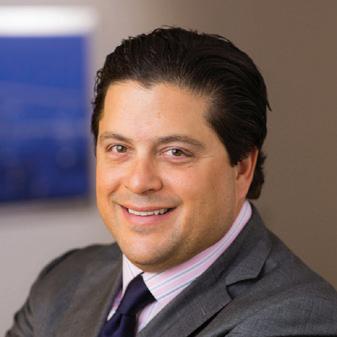
MEMBERS
Michael Addis, MD
Joseph Bier Thomas Chen Celia Colbert
Alan Garten, MD
Stuart Geffner, MD Gregg Gottsegen Alison Grann, MD Jeffrey Kigner
Andrew Kogan, Esq. Russell Langan, MD Michael Marano, MD
Robert Marcus Joseph Mauriello
Andrea Melchiorre
Rahul V. Pawar, MD
Evan Ratner
Michael Rekoon Richard Ritholz
Ryan Schinman David Sidman
Cori Wilf
Anthony Wolk Kathryn Zizza
Richard J. Kogan, Chairman Emeritus
HEALTH NEWS
94 Old Short Hills Rd., Livingston, NJ 07039 973.322.5000 | www.rwjbh.org/coopermanbarnabas
CONNECT WITH US ON
@CoopermanBarnabasMedicalCenter
@CBMCNJ
RWJBarnabas Health

Cooperman Barnabas Medical Center complies with applicable federal civil rights laws and does not discriminate on the basis of race, color, national origin, age, disability or sex. For more information, see link on our home page at www.rwjbh.org/coopermanbarnabas. Cooperman Barnabas Medical Center cumple con las leyes federales de derechos civiles aplicables y no discrimina por motivos de raza, color, nacionalidad, edad, discapacidad o sexo. ATENCIÓN: Si usted habla español, servicios de asistencia lingüística, de forma gratuita, están disponibles para usted. Llame al 973.322.5000. Cooperman Barnabas Medical Center konfòm ak lwa sou dwa sivil federal ki aplikab yo e li pa fè diskriminasyon sou baz ras, koulè, peyi orijin, laj, enfimite oswa sèks. ATANSYON: Si w pale Kreyòl Ayisyen, gen sèvis èd pou lang ki disponib gratis pou ou. Rele 973.322.5000.
For issues regarding delivery of Healthy Together, please write to HTcirculation@wainscotmedia.com.
LEADERSHIP
@CoopermanBarnabas MESSAGES FROM
Healthy Together | 2 | Winter 2023
UTERINE FIBROIDS. What you need to know.
SNOWY DAY SAFETY. How to avoid common winter injuries.

GOOD TIMES FOR GOOD HEALTH. Recent special events.
PREVENTING SUICIDE What you say and do may help save a life.
CARDIO VS. STRENGTH TRAINING. Which is better for heart health? Resolving an old debate.
HEMATOLOGY DREAM TEAM. Meet the world-class team of doctors treating blood disorders and cancers.
BETTER WOMEN’S HEALTH AT EVERY AGE. From adolescents to seniors: what every woman needs to know.

SPECIALTY OUTPATIENT CARE FOR KIDS. Children’s Specialized Hospital offers a range of services at 14 locations.
BEYOND BED-WETTING. Treating urologic conditions in children.
BANKING ON LIFE. How, where and when to donate blood this winter.
‘THE DAWN OF A NEW ERA’. Breaking ground on a state-of-the-art cancer center.

HEALTH NEWS. Goodfor-you winter foods, caffeine for teens, salt substitutes.

A CARDIOLOGY MILESTONE. Celebrating 500 lifesaving procedures for AFib patients.
AN ORTHOPEDIC INNOVATOR. The surgeon whose surgical hardware designs improve patient care.

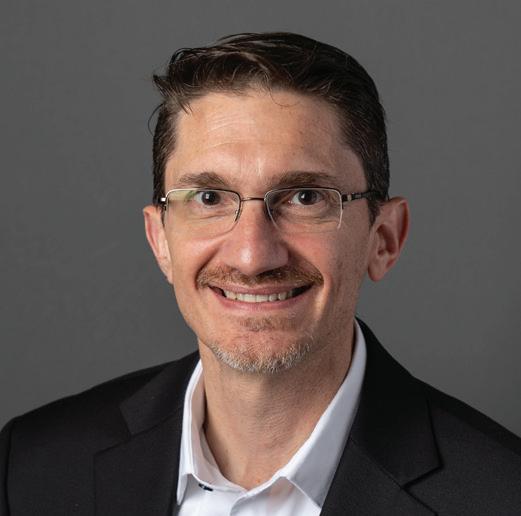
6 17 contents WINTER
healthytogether 23 20 22 4 4.
6.
8.
9.
17.
20.
22.
23.
11.
12.
14.
15.
16.
12
Cooperman Barnabas Medical Center | RWJBH.ORG/COOPERMANBARNABAS 3
2023
10.
A QUICK GUIDE TO UTERINE FIBROIDS
WHAT YOU NEED TO KNOW ABOUT THIS COMMON MALADY
I
f you’re a woman reading this article, there’s a good chance you have—or had or will have—uterine fibroids. “By the age of 50, as many as 70 to 80 percent of women may have fibroids,” says Eric Liberman, DO, Director of Minimally Invasive Gynecologic Surgery at Cooperman Barnabas Medical Center (CBMC). Fortunately, most women with fibroids won’t experience any symptoms or need treatment. Many women will never even know they have them. But for the approximately one-third of women with fibroids who will experience symptoms, there are many treatment options.


WHAT ARE FIBROIDS?
Fibroids are noncancerous growths in the uterus. There are several types, defined by their location. Intramural fibroids are contained within the uterine wall. Submucosal fibroids protrude into the uterine cavity. Pedunculated fibroids are attached to the outside of the uterine wall by a stalk. What mainly determines whether fibroids will cause symptoms are their size and location. “Location is what
ERIC LIBERMAN, DO
Healthy Together | 4 | Winter 2023
THAD DENEHY, MD
matters most,” explains Dr. Liberman. “Submucosal fibroids are usually the ones that cause the most problems.”
Symptoms can include heavy menstrual bleeding (which can be severe enough to cause anemia); pelvic pain, pressure or bloating; increased urinary frequency and constipation. In very rare cases, fibroids can be dangerous if they grow so large that the uterus expands and compresses blood vessels and other structures in the pelvis.
Fibroids may stay the same size, grow larger or even shrink over time. “Once a woman reaches menopause, fibroids tend to shrink,” says Dr. Liberman. “We don’t know if it’s estrogen, progesterone or a combination of the two hormones that cause fibroids to grow.”
Many women will only find out they have fibroids during a routine pelvic examination or on unrelated imaging.
OPTIONS FOR TREATMENT
FIBROIDS AND PREGNANCY
First the good news: Most fibroids won’t interfere with getting or being pregnant. But depending on the size and location of the growths, there may be cause for concern. For instance, fibroids that are inside the uterus or compressing it can interfere with conception or lead to early pregnancy loss. “Women should have a discussion with their physician about what to do about fibroids if they want to become pregnant in the future,” says Thad Denehy, MD, a gynecologic oncologist who deals with complex myomectomies and Head of the Division of Gynecologic Oncology at CBMC.
In some cases, it may be beneficial to have fibroids removed before trying to conceive. “Many methods for treating fibroids, such as UFE or GnRH medications, are not appropriate for women who want to preserve their fertility,” says Dr. Denehy. “Myomectomy—removal of the fibroids (but not the uterus)—is usually the recommended treatment.”
Removing the fibroids can improve a woman’s chance of getting pregnant, but the timing of the surgery is important. Since there’s such a high risk of fibroids recurring, women should try to schedule the procedure not long before they want to become pregnant. “An analogy is that it’s like pulling all the weeds in your garden,” explains Dr. Denehy. “It looks great for a few months, then you go away for the summer. When you come back, the garden is covered in weeds again. It’s similar with fibroids.”
In the past, symptomatic fibroids were almost always treated by surgical removal. And while that’s still a treatment recommended for many women, there are other options:
1. OBSERVATION: A doctor may decide to monitor the growths by doing repeat imaging every few months to assure they’re not increasing in size or number. If symptoms are mild, a woman may not need any treatment or may be able to manage discomfort with over-the-counter pain relievers like ibuprofen.
2. PRESCRIPTION MEDICATIONS: There are new prescription medications available that can reduce the heavy bleeding associated with fibroids. “But these medications can only be used up to 24 months because there’s a risk of bone loss and other side effects with longer use,” says Dr. Liberman.
3. UTERINE FIBROID EMBOLIZATION (UFE): “This is a procedure done by an interventional radiologist,” says Dr. Liberman. “The radiologist places a catheter in the patient’s groin. Using CT scan guidance, they guide the catheter to the blood vessels that supply the fibroids. They put a substance into the feeding blood vessels to decrease the fibroid’s blood supply.” This procedure, he says, is most successful in women 45 and over since those women often only have another five years or so before menopause, so the risk of recurrence is lower.
4. HYSTEROSCOPIC FIBROID RESECTION (ALSO CALLED HYSTEROSCOPIC MYOMECTOMY): “This is a procedure that’s done without any incisions,” explains Dr. Liberman. “A camera is inserted into the uterus through the vagina, and fibroids within the cavity of the uterus, or partially in the cavity, can be removed.”
5. MYOMECTOMY: “This is a surgery to remove just the fibroids,” says Dr. Liberman. “It can be done through an open surgical approach or laparoscopically.” This procedure is mainly recommended for women who want to retain their fertility [see sidebar/box, above]. Patients need to understand that the risk of new fibroids forming may be as high as 60 percent.
6. HYSTERECTOMY: “This surgery—removal of the uterus—is the only definitive management for symptomatic fibroids. Once you have your uterus removed, you’ll never have another fibroid or associated bleeding,” says Dr. Liberman. The surgery can usually be done minimally invasively with only tiny incisions. “Some patients can go home the same day,” he says. About 600,000 hysterectomies are done in the United States each year, and the most common reason for the surgery is fibroids.
Which treatment, if any, is right for you is something you need to discuss with your doctor. If you’re experiencing the previously mentioned common fibroid symptoms, make sure your doctor knows your concerns. “Often, patients think the amount of menstrual bleeding they’re experiencing is normal, but it is not,” says Dr. Liberman, explaining that in those cases patients may have anemia and the cause can go unrecognized. “It’s important that women are aware of fibroids so they can be their own advocates,” he says.
For more information about Dr. Denehy or Dr. Liberman, please call 973.243.9300
Cooperman Barnabas Medical Center | RWJBH.ORG/COOPERMANBARNABAS 5
SNOWY DAY SAFETY
Snowy days bring out the kid in all of us. But whether you ski, sled, skate or snowboard, those slippery slopes and slick surfaces can also increase your risk for mishaps.

Nearly 200,000 winter sports injuries occur each year, according to the U.S. Consumer Products Safety Commission. Add in the 1 million slips, trips and falls that occur every winter, and your risks of
suffering an accident that needs medical care increase significantly.
Here are some of the most common winter injuries—and advice from three top doctors on what to do if you sustain them.
CONCUSSION
A concussion is a traumatic brain injury that can occur if you fall and hit your head, which is all too common among people who sled, ski and snowboard. Symptoms range from mild (blurred vision, drowsiness, confusion or dizziness) to severe (serious headache,
light or noise sensitivity, balance issues— even loss of consciousness).
“If you experience vomiting, loss of consciousness, midline neck pain or numbness, slurred speech, tingling or weakness in any area of the body, or if you feel the worst headache of your life, go to an urgent care center or emergency department immediately,” says Jason Krystofiak, MD, a board-certified, fellowship-trained primary care sports medicine physician at Cooperman Barnabas Medical Center (CBMC) and a member of RWJBarnabas Health Medical Group. Even if your symptoms are mild, if they don’t go away on their own, consult your healthcare provider.
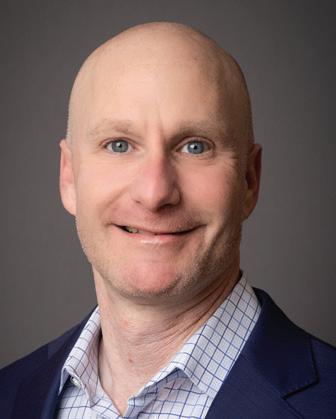
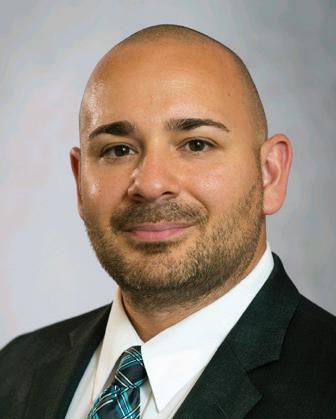
SHOULDER INJURIES
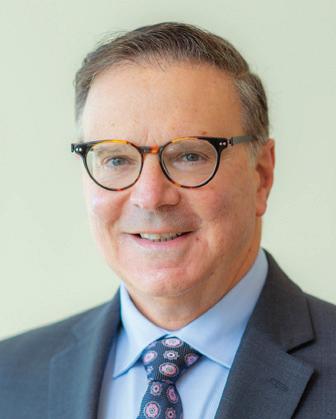
Dislocated shoulders are among the
PETER DELUCA, MD
HOW TO AVOID THEM—AND WHAT
DO IF YOU EXPERIENCE THEM
COMMON WINTER INJURIES,
TO
Healthy Together | 6 | Winter 2023
JASON KRYSTOFIAK, MD ERIC HANDLER, DO
more common injuries suffered by skiers, ice skaters and hockey players. “When you fall, your instinct is to break your fall with an outstretched arm, which can cause the dislocation,” says Peter DeLuca, MD, Chief of Sports Medicine at CBMC. Falls on your arms and hands can also cause wrist sprains and fractures to your hand or wrist, all of which require medical attention.
KNEE INJURIES
These rank as the top winter sports injuries for skiers. They occur most often in one of the two ligaments (anterior cruciate ligament or medial collateral ligament) that support and stabilize the knee, but they can also include fractures of the kneecap or the bones above and below the knee. People suffering serious knee injuries may require surgery and will likely need physical therapy and rehabilitation.
SKIER’S THUMB
This is the second-most common wintertime injury among skiers. It happens when a skier falls and holds onto the pole. “The pole acts like a fulcrum against the thumb,” Dr. DeLuca says. “This can lead to a torn ligament that may require surgery to fix.”
SNOWBOARDER’S ANKLE
This is technically called a fracture of the talus bone, which is the bone located directly above your heel. “The way the foot is clipped into a snowboard puts snowboarders at particular risk,” Dr. DeLuca says.
OTHER COMMON WINTER INJURIES
Any slip or fall on the snow could lead to fractures or back and neck injuries. In addition, shoveling heavy amounts of snow (or any kind of strenuous exercise) may increase the risk of a heart attack. “If you feel chest pain or shortness of breath, call 911 immediately,” says Eric Handler, DO, Chair of Emergency Medicine at CBMC.
9 TIPS FOR SAFE WINTER FUN
STRETCH
1
Even if the only “sport” you take part in this winter is shoveling your sidewalk, you should stretch before you do it. If you’re planning a scheduled ski or snowboarding trip, start a stretching routine a few weeks beforehand and include the muscle groups you’ll most likely use. “For example, if you’re going skiing, stretch your quadriceps, which are constantly activated when you downhill ski,” Dr. DeLuca says.
2
WEAR PROTECTIVE EQUIPMENT
Helmets are a must-have for hockey, skiing, snowboarding and sledding. Wrist guards are also a good choice for many winter sports. Make sure that all safety equipment fits well and is in good condition (no cracks in helmets, for example).
3
RECOGNIZE YOUR LIMITS
“Don’t exceed your skill level with regard to the trail you ski or snowboard on,” says Dr. Krystofiak. For example, if you’re a novice skier, don’t try the double black diamond slope, which is only for experts. Also, know when you’re feeling too tired to continue. “I see too many patients who tell me, ‘It was the last run of a long day’ when they suffered their injury,” says Dr. DeLuca.
4
KNOW THE “RIGHT WAY TO FALL”
Ice skaters and hockey players will fall on the ice at some point in their lives. They’re taught to fall with their legs fanned out, so they land on their buttocks, which are designed to absorb the fall better than an outstretched arm or hand.
STAY HYDRATED
5
That steam you see when you breathe on a cold day—that’s water leaving the body. Stay hydrated with water (coffee and hot chocolate may dehydrate you). “Dehydrated muscles fatigue much faster and leave you prone to injury,” says Dr. DeLuca.
KEEP WARM
6
Dress in layers and be sure to wear a hat and gloves. “If you start to feel or see any signs of frostbite—tingling, pain or discolored skin on the tips of your ears, nose or fingers—get inside immediately and warm up slowly,” says Dr. Handler.
WATCH YOUR STEP
7
Wear comfortable shoes with a strong grip in icy or snowy conditions. Use a handrail if it’s available. Use ice melt on sidewalks and driveways—either calcium chloride or pet-friendly magnesium chloride.
SHOVEL SMARTLY
8
If you’re age 55 or over, make sure your doctor says it’s safe for you to shovel.
9
DON’T GO IT ALONE
Never ski, snowboard or go sledding by yourself. Count on your friends to let you know when it’s time to stop for the day. Always supervise children when they play outside.
For more information about RWJBarnabas Health Orthopaedic Group, please call 973.322.7005
Cooperman Barnabas Medical Center | RWJBH.ORG/COOPERMANBARNABAS 7
GATHERING FOR SUPPORT
SPECIAL EVENTS AND FUNDRAISERS FOR CBMC
People in the community recently came together in a variety of special events hosted by the Cooperman Barnabas Development Department. The development team regularly offers opportunities to gather not only people but support for the medical center. Here’s a look at some recent successful CBMC events.
A REASON TO ROCK TO SUPPORT CANCER CARE AT CBMC

On Thursday, November 3, 2022, Comfort Project 360 hosted its 9th annual A Reason to Rock at Crestmont Country Club to benefit The Cancer Center at Cooperman Barnabas Medical Center, where attendees and sponsors enjoyed a music, dancing, food and fun.


The goal of Comfort Project 360 is—and has been since its inception in 2014—to enhance the overall experience for those receiving treatment at The Cancer Center at CBMC by creating a comforting, calming and supportive environment for patients and their families. The program offers services such as a Comfort Cart, which provides healthy snacks to patients during treatment; comfortable, spa-like robes, instead of disposable gowns, for patients; and various small gifts such as blankets and water bottles. In the past nine years, Comfort Project 360 has raised more than $6 million dollars, and contributions, donations and sponsorship packages for A Reason to Rock have helped to renovate infusion rooms, modernize patient and family waiting areas, provide support for patient care programs and more.
HONORING HEROES AT THE VALOR AWARDS
The Burn Center at Cooperman Barnabas Medical Center (CBMC) recently presented 10 New Jersey firefighters with the prestigious Valor Award for their courage and bravery at the 35th Annual Valor Awards. During the event, more than 100 additional firefighters, police officers and emergency medical technicians were honored for their work in the community.
The Valor Awards salute an elite group of firefighters and first responders for their bravery, courage and dedication to the citizens of New Jersey. Honorees are nominated by respective departments and selected by a committee of peers.

For information on upcoming fundraising events at CBMC or to donate to the medical center, visit www.rwjbh.org/giving
THE 22ND ANNUAL MIRACLE WALK

The 22nd Annual Miracle Walk took place on Sunday, October 9 at Verona Park. The fun-filled day included face painting, team photos, arts and crafts, balloon art and other activities such as an opening ceremony and a walk around Verona Lake. It was the first time Miracle Walk had been in person since the start of the pandemic and it was a resounding success, with about 2,000 people participating. Close to $180,000 was raised at the event to benefit the CBMC Neonatal Intensive Care Unit (NICU).
 LEFT: (From left) Ellen Loventhal, Dara Orbach, Suzanne Unger, Lori Gelman, Toba Grossbaum and Hyla Weiss at Reason to Rock. RIGHT: Michael Scoppetuolo, MD, Medical Director, The Cancer Center at CBMC; Alan Garten, MD, Chairman, Radiology; and Bruce Schonbraun, Chair, Board of Trustees, CBMC.
TOP: The starting line at Miracle Walk 2022. BOTTOM: (From left)Richard Davis, President and CEO, Cooperman Barnabas Medical Center; Kamtorn Vangvanichyakorn, MD, Medical Director, Neonatology, with Jonathan and Haley Hirschmann, founders of Miracle Walk.
LEFT: (From left) Ellen Loventhal, Dara Orbach, Suzanne Unger, Lori Gelman, Toba Grossbaum and Hyla Weiss at Reason to Rock. RIGHT: Michael Scoppetuolo, MD, Medical Director, The Cancer Center at CBMC; Alan Garten, MD, Chairman, Radiology; and Bruce Schonbraun, Chair, Board of Trustees, CBMC.
TOP: The starting line at Miracle Walk 2022. BOTTOM: (From left)Richard Davis, President and CEO, Cooperman Barnabas Medical Center; Kamtorn Vangvanichyakorn, MD, Medical Director, Neonatology, with Jonathan and Haley Hirschmann, founders of Miracle Walk.
Healthy Together | 8 | Winter 2023
Some of the heroes honored for their bravery at the 35th Annual Valor Awards.
SUICIDE WARNING SIGNS
Contact the RWJBarnabas Health Behavioral Health Access Center at 800.300.0628 for information about services or a referral to a mental health specialist.
HELP AND HOPE FOR THOSE AT RISK FOR SUICIDE
Suicide. It’s a scary word. According to the Centers for Disease Control and Prevention (CDC), close to 48,000 people in the U.S. died by suicide in 2020—that’s one person approximately every 11 minutes. You may have a family member or friend who is contemplating, or who has attempted, suicide—and chances are you don’t even realize it. There are several reasons for that.
• The warning signs are not always clear—and not every person exhibits them.
• The associated stigma is so widespread that many people in crisis are afraid or ashamed to reach out for help.
• There’s often a very brief period between thought and action. Studies have shown that nearly half of those who’ve attempted suicide did so within 10 minutes of first thinking about attempting.
Nobody knows this better than
Mark A. Graham, a retired U.S. Army Major General who serves as Executive Director, Rutgers University Behavioral Health Care (UBHC) and RWJBH Behavioral Health and Addictions Services, National Call Center and Vets4Warriors, which includes the New Jersey Suicide Prevention Hopeline (NJ Hopeline). One of his sons died by suicide in 2003 and since then, Maj. Gen. Graham and his wife, Carol, have been tireless champions of efforts to promote suicide-prevention awareness.

One in five adults in the U.S. (nearly 53 million people) lives with a mental illness. Yet, it still is not widely acknowledged as “real” sickness. “We’ve made some progress in changing that perception,” says Maj. Gen. Graham, “but we’re going to have the stigma until we make mental healthcare part of healthcare. Mental health is health.”
One of the goals of the NJ Hopeline, which launched a decade ago, is to make it easier for people contemplating suicide to seek help without fear of judgment. All NJ Hopeline employees have extensive training and are well

According to the National Institute of Mental Health, signs that a person may be thinking about suicide include:
Talking about:
• Wanting to die
• Great guilt or shame
• Being a burden to others
Feeling:
• Empty, hopeless, trapped or having no reason to live
• Extremely sad, anxious, agitated or full of rage
• Unbearable emotional or physical pain
Changing behavior:
• Making a plan or researching ways to die
• Withdrawing from friends, saying goodbye, giving away important items or making a will
• Taking dangerous risks such as driving extremely fast
• Displaying extreme mood swings
• Eating or sleeping more or less
• Using drugs or alcohol more often
prepared to help callers. “During a crisis, quick access to support and care can prevent death by suicide,” says NJ Hopeline Program Director William Zimmerman. “We listen, support and assess people for needs. There’s no time limit for a call, and we’re available 24/7. If we can keep that person engaged and supported, the suicidal action may never happen,” he says. Maj. Gen. Graham agrees. “The last thing we want to do is make a person regret that they called,” he says. “We want people to feel better, to know that there’s hope and help and that they’re not alone.”
If you or someone you know is experiencing warning signs of suicide, get help
Call 988 or NJ Hopeline at 855.654.6735 . For more information, visit
.
immediately.
rwjbh.org/behavioralhealth
A
ARMY MAJOR
AND HIS STAFF HELP PREVENT SUICIDE—ONE CALL AT A TIME.
RETIRED U.S.
GENERAL
MAJ. GEN. (RETIRED) MARK A. GRAHAM
RWJBarnabas Health | RWJBH.ORG 9
THE GREAT DEBATE:
CARDIO VS. STRENGTH TRAINING
Everyone knows that exercise is good for the heart. But what kind of exercise is most beneficial for optimum heart health—cardio or strength training? Anthony Altobelli III, MD, Clinical Chief of Cardiology, Robert Wood Johnson University Hospital (RWJUH) and RWJBarnabas Health (RWJBH) Medical Group, sheds some light on this decades-old debate.
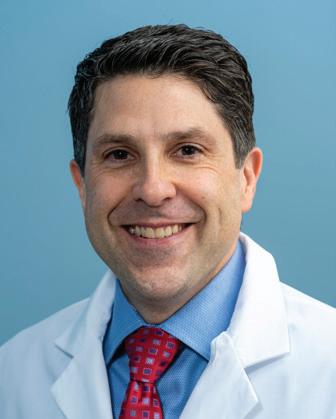
When it comes to cardio vs. strength training for heart health, is one more beneficial than the other?
The scientific evidence is still building around which form of exercise is best to prevent chronic disease. Historically, aerobic (or cardio) exercise was always recommended for heart and lung health with little attention paid to strength (or resistance) training. What’s clear now, however, is that strength training is as important to heart health as aerobic exercise and that a combination of both yields the best heart outcomes with regard to blood pressure, body composition,
fitness, strength and metabolism. In turn, beneficial change in a person’s physiology yields a lower risk of diabetes, hyperlipidemia (high cholesterol), heart attack and stroke.
What’s the best way to combine these exercises?
Physical Activity Guidelines for Americans , a 2018 report from the Department of Health and Human Services, recommends that each week, adults aged 18 to 64 do at least 150 to 300 minutes of moderate-intensity aerobic activity, 75 to 150 minutes of vigorous-intensity aerobic activity or an equivalent combination of both. Strength training should be performed at least twice a week on nonconsecutive days to allow a period of rest for the muscle groups being stressed.
How does age affect the type of exercise(s) a person should do?
As we age, safety becomes an issue. The aging adult should do both forms of exercise, but participation should take into account chronic medical conditions,
such as musculoskeletal disorders, that may place the individual at risk for injury. For people at risk for falls or with balance issues, resistance exercises, such as chair squats, heel lifts, rowing, resistance bands, bicep curls and shoulder presses, may be effectively and safely performed. Research continues to support strength/resistance training for older individuals.
What advice do you have for the average person who wants to start an exercise regimen to improve their heart health?
Recommendations are based on age and whether the individual is new to an exercise program. First, choose exercise that you may find enjoyable.
Second, set realistic expectations for how often and how long you’ll exercise. Third, choose exercises that you can safely perform.
Fourth, consider partnering with others for motivation and socialization. Fifth, communicate with your physicians.
ANTHONY ALTOBELLI III, MD
Whoever your heart beats for, our hearts beat for you. To connect with a top cardiovascular specialist at RWJBarnabas Health, call 888.724.7123 or visit www.rwjbh.org/heart. FIND OUT WHICH ONE IS BEST FOR YOUR HEART
HEALTH.
Healthy Together | 10 | Winter 2023
WORLD-CLASS CARE FOR BLOOD CANCERS CLOSE TO HOME
The Hematologic Malignancies Program at Rutgers Cancer Institute of New Jersey and RWJBarnabas Health is known in New Jersey and beyond for its world-class multidisciplinary team of cancer experts and for its coveted place at the forefront of cancer research. As the state’s only National Cancer Institute-Designated Comprehensive Cancer Center, it offers patients access to the most advanced treatment options for blood cancers, including blood and marrow transplantation, CAR T-cell therapy, immunotherapies and innovative clinical trials, many not available elsewhere.
Now, the highly regarded program
has extended its reach—and its potential—with the addition of two nationally recognized leaders in the field of hematologic malignancies to lead and complement the already outstanding team in place.

As the new Chief of Blood Disorders, Matthew Matasar, MD, MS, brings extensive expertise to the program and is among the nation’s most experienced clinicians and researchers in routine, rare and complex hematologic malignancies, with extensive expertise in treating these types of cancers with clinical trials, immunotherapy and other cellular therapies. Dr. Matasar will lead the enhancement of multidisciplinary clinical services, including programmatic growth of the bone marrow transplant and cellular therapy programs across the health system.
“My goal is to grow what already is an amazing program with extraordinary physicians,” says Dr. Matasar. “My vision is to continue to develop the health system’s ability to give best-in-class care; to deliver the most promising novel
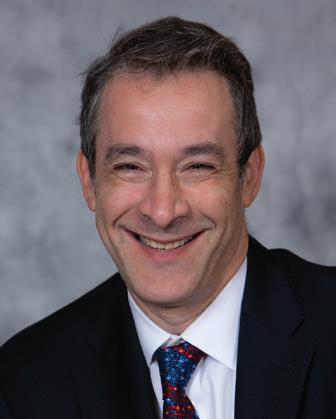
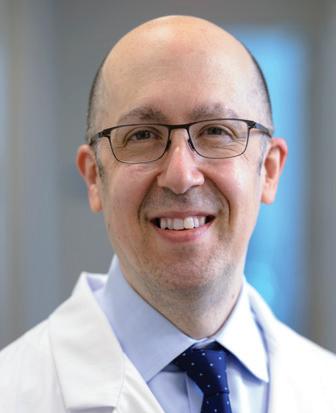
therapies in the context of ongoing and new clinical trials; to educate our patients, their families and the community; and to train physicians how best to take care of these patients.”
Ira Braunschweig, MD, Chief of Transplant and Cell Therapy, is an expert at treating blood cancers with blood and marrow transplantation as well as with CAR T-cell therapy, in which, he says, “We take the cells of a patient’s own immune system and reengineer them to become super-powerful cancerfighting cells.” Dr. Braunschweig was one of the physician-scientists leading the pivotal study in late 2015 that established CAR T-cell therapy as a standard for relapsed and refractory aggressive lymphoma.
“The Rutgers Cancer Institute/ RWJBarnabas Health program has a strong foundation,” he says. “I want to take it to the next level by expanding it and ensuring that more patients have these therapies available to them close to home, and by further enhancing the availability of cutting-edge therapies.”
To learn more about the Hematologic Malignancies Program at
Rutgers Cancer Institute of New Jersey/RWJBarnabas Health,
please visit www.rwjbh.org/beatcancer
MATTHEW MATASAR, MD, MS
CANCER DOCTORS ARE HELPING TO ENHANCE AND EXPAND THE HEMATOLOGIC MALIGNANCIES PROGRAM AT RUTGERS CANCER INSTITUTE
NEW JERSEY
HEALTH.
RENOWNED
OF
AND RWJBARNABAS
RWJBarnabas Health RWJBH.ORG | 11
IRA BRAUNSCHWEIG, MD
BETTER WOMEN’S HEALTH AT EVERY AGE
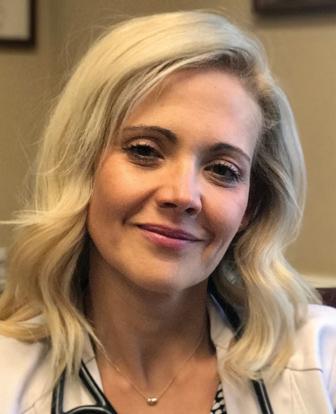

Throughout a woman’s life, her body and her healthcare needs evolve. From adolescence through menopause and beyond, women experience many changes. Staying healthy through all those changes can be daunting—but it doesn’t have to be. We asked doctors at RWJBarnabas Health to share some of their best advice on how women can maintain optimal

WHAT WOMEN NEED TO KNOW TO STAY WELL— FROM ADOLESCENCE TO AGELESS.
health at every age and stage.
PREVENTIVE AND GENERAL HEALTHCARE
Being proactive about preventing illness and injury should start early in a woman’s life. “Adolescent women should be encouraged to establish healthy eating and sleeping habits, exercise regularly and avoid excessive screen time,” says

Robert A. Graebe, MD, Chair and Program Director of the Department of Obstetrics and Gynecology at Monmouth Medical Center. Preventive care, he says, can include taking seemingly simple but important measures such as consistently using sunblock and always wearing a seat belt.
Dr. Graebe also stresses the importance of caring for mental health and says that adolescent and young women should be encouraged to seek support for feelings of anxiety and depression or other mental health problems. In addition, women should schedule an annual well-woman visit. “During this visit, the care you receive will focus on you, your body and your reproductive health,” says Dr. Graebe. “A well-woman visit also provides a time
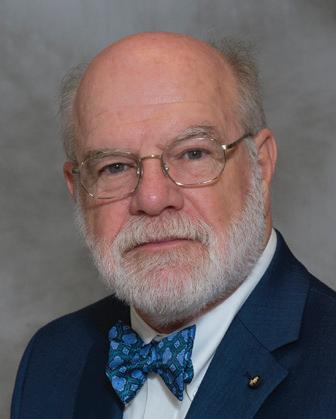 ROBERT A. GRAEBE, MD
LENA L. MERJANIAN, MD
NICOLE M. MONTERO LOPEZ, MD
ROBERT A. GRAEBE, MD
LENA L. MERJANIAN, MD
NICOLE M. MONTERO LOPEZ, MD
Healthy Together | 12 | Winter 2023
JULIE MASTER, DO, FACC
to discuss fertility questions and family planning options and to get screened for sexually transmitted diseases.”
GYNECOLOGIC AND REPRODUCTIVE HEALTH
• First OB/GYN Visits
“The American College of Obstetricians and Gynecologists recommends that a girl establish care with a gynecologist between the ages of 13 and 15,” says Lena L. Merjanian, MD, an obstetrician and gynecologist at Rutgers Health. “This visit is an opportunity for her to establish a trusting rapport with her physician. It’s a confidential visit to discuss reproductive health concerns, contraception, relationships, adolescent sexuality and avoiding risky behaviors.”
According to Dr. Graebe, the first OB/ GYN visit is also an opportunity to establish the diagnosis of common problems such as polycystic ovarian syndrome, hypothyroidism, eating disorders, etc. “The majority of bone formation occurs during the early years, so discussion concerning proper bone health is vital to prevent future osteoporosis,” says Dr. Graebe. A first gynecologic visit usually doesn’t include a pelvic exam or Pap smear.
• Reproductive Years
During a woman’s reproductive years, maintaining optimal health can increase her chances of a healthy pregnancy and birth if she chooses to start or grow a family. Folic acid supplementation is important, especially when planning a pregnancy. In addition, women should be proactive with age-appropriate screenings, such as Pap and HPV (human papillomavirus) tests. They should use condoms with new sexual partners to prevent sexually transmitted diseases, such as chlamydia and gonorrhea, which can negatively impact fertility. And, says Dr. Graebe, they should be aware that “a woman’s peak fertile years are from about age 27 to 29, with a steady decline starting in the mid-30s.”
Some women, including those receiving cancer therapies and those wishing to postpone pregnancy until beyond their mid-30s, may want to consider egg freezing and subsequent
HEALTH EQUITY
The importance of women’s health equity cannot be understated. According to Meika Neblett, MD, MS, Chief Medical Officer at Community Medical Center, “Women’s health equity requires an integrated approach that recognizes the need for progress in understanding the social determinants of health, diversity and inclusion, and their intersectionality.


MEIKA NEBLETT, MD, MS
“RWJBarnabas Health has made equity a priority in women’s health,” says Dr. Neblett, “and it has taken steps toward removing barriers to preventive screenings that lead to earlier diagnosis and treatment of certain types of cancers as well as improving access to family planning services.”
in-vitro fertilization, says Dr. Graebe.
• Breast Health
Breast self-awareness should start at about age 20, when women should focus on knowing what’s normal for their breasts. If changes are noticed, women should talk to their primary care provider or OB/GYN. Regular breast screening can help detect cancer at an early and more treatable stage. For women at average risk for breast cancer, a clinical breast exam is recommended every one to three years between the ages of 25 and 39, and a mammogram is recommended every one to two years beginning at age 40. “It’s important for women to be aware of their family history,” says Dr. Graebe. “Women at increased risk, such as those with a family history of breast cancer and other hereditary cancer syndromes, may benefit from seeing a genetic counselor.”
HEART HEALTH
“It’s important for a woman to know her risk factors for heart disease, including her cholesterol numbers, blood pressure, family history and smoking status,” says Julie Master, DO, FACC, Director of Noninvasive Cardiac Services at Monmouth Medical Center. “There are also novel risk factors such as pregnancy complications that can put a woman at
higher risk of heart disease in the future. A history of cancer treatment may also increase her risk. Having a yearly physical and not ignoring symptoms are of the utmost importance.”
BONE HEALTH
Most women don’t think about their bones until there’s a problem with them, but bones need care to stay healthy just like the rest of the body.
Bone density testing is one way to measure bone health. This is especially important for women because, according to Nicole M. Montero Lopez, MD, an orthopedist at Clara Maass Medical Center, hormonal changes during menopause can directly affect bone density. Women 65 and older and women under 65 with risk factors, such as a family history of the disease or fracture, should have a bone density test. Frequency of testing depends on age, results of prior tests and individual risk of fracture. The goal in osteoporosis prevention is to slow down the loss of bone mass to reduce the risk of fractures. You can strengthen your bones with certain exercises and lifestyle changes. Weight-bearing exercise is the most important type of exercise for preventing osteoporosis, and a diet rich in calcium and vitamin D is good for bone health.
To learn more about women’s health services at RWJBarnabas Health, visit www.rwjbh.org/treatment-care/womens-health
RWJBarnabas Health RWJBH.ORG | 13
CHILDREN’S CARE CLOSE TO HOME
WHERE TO TURN FOR SPECIALIZED OUTPATIENT SERVICES THROUGHOUT NEW JERSEY
As a leading provider of inpatient and outpatient care for children who face special health challenges from birth to age 21, Children’s Specialized Hospital, part of the RWJBarnabas Health Children’s Health Network of hospitals, partners with families to treat a wide range of developmental, physical, mental and behavioral concerns. You’ll find outpatient services close to home at these New Jersey locations.
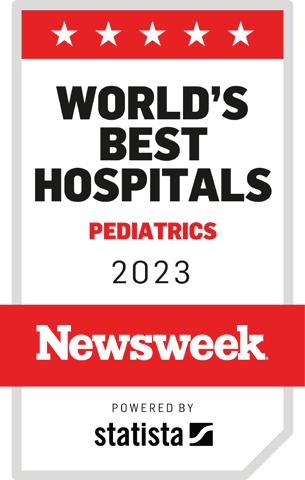
HAMILTON
• Audiology
• Developmental and behavioral pediatrics
• Neurology
• Occupational therapy
• Physiatry
• Physical therapy
• Psychiatry
• Psychology
• Special needs primary care
BAYONNE
• Developmental and behavioral pediatrics
• Occupational therapy
• Physical therapy
• Speech and language therapy
CLIFTON
• Developmental and behavioral pediatrics
• Neurology
• Occupational therapy
• Orthopedics
• Physical therapy
• Psychology
• Speech and language therapy
EAST BRUNSWICK
• Occupational therapy specializing in upper extremity and hand therapy
• Physical therapy specializing in orthopedic and sports medicine

EATONTOWN
• Audiology
• Developmental and behavioral pediatrics
• Neurology
• Occupational therapy
• Physiatry
• Physical therapy
• Psychology
• Speech and language therapy
EGG HARBOR TOWNSHIP
• Developmental and behavioral pediatrics
• Occupational therapy
• Physiatry
• Physical therapy
• Psychiatry
• Psychology
• Speech and language therapy
• Speech and language therapy
NEWARK
• Developmental and behavioral pediatrics
• Occupational therapy
• Physical therapy
• Speech and language therapy
NEW BRUNSWICK— PLUM STREET
• Developmental and behavioral pediatrics
• Neurology
• Neuropsychology
• Occupational therapy
• Physiatry
• Physical therapy
• Psychiatry
• Psychology
• Speech and language therapy
TOMS RIVER— LAKEHURST ROAD AND STEVENS ROAD
• Audiology
• Developmental and behavioral pediatrics
• Neurology
• Nutrition
• Occupational therapy
• Physiatry
• Physical therapy
• Psychiatry
• Psychology
• Rehabilitation technology
• Speech and language therapy
UNION
• Audiology
• Developmental and behavioral pediatrics
• Neurology • Neurorehabilitation
• Occupational therapy
• Orthopedics
• Physiatry
• Physical therapy • Psychiatry • Psychology
• Special needs primary care • Speech and language therapy
SOMERSET
• CSH RUCARES Severe Behavioral Program
• Intensive Feeding Disorders Program
WEST ORANGE
• Occupational therapy
• Physical therapy
• Speech and language therapy
To learn more about outpatient programs and services or to schedule an appointment, call 888.244.5373 or visit www.rwjbh.org/cshoutpatient At Children’s Specialized Hospital, we provide world-class care for children and young adults who face special health challenges across the state of New Jersey and beyond. We treat everything from chronic illnesses and complex physical disabilities, like brain and spinal cord injuries, to a full scope of developmental, behavioral and mental health concerns. We have convenient locations throughout the state: Bayonne, Clifton, East Brunswick, Eatontown, Egg Harbor Township, Hamilton, Newark, New Brunswick, Somerset, Toms River, Union and West Orange.
Outpatient services include facilities and equipment specially designed to meet children’s needs. Healthy Together | 14 | Winter 2023
An RWJBarnabas Health facility
BEYOND BED-WETTING
A TOP PEDIATRIC UROLOGIST SHARES THE LATEST TREATMENTS FOR URINARY TRACT PROBLEMS IN CHILDREN.
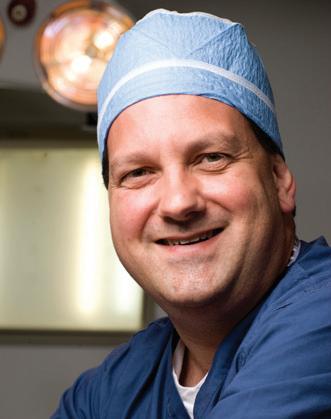
Joseph Barone, MD, a nationally recognized expert in the field of pediatric urology, was recently appointed Medical Director of Pediatric Urology for the Children’s Health Network of RWJBarnabas Health (RWJBH). Dr. Barone is also Chief of the Division of Urology and Professor of Surgery at Rutgers Robert Wood Johnson Medical School. Here, Dr. Barone talks about children’s urologic conditions as well as what’s new in the field.
How has the RWJBH pediatric urology program changed recently?
We’re now a system-based program with all pediatric urologists in all RWJBH children’s hospitals working as one group. This allows us to take advantage of
synergistic opportunities for clinical access, safety, quality and diversity. With integration, patients will receive the same pediatric urology care no matter where they are in the system.
How are children’s urologic issues different from those of adults?
Children mostly have congenital problems and adults deal with problems that develop during life. Because of this, the practice of pediatric urology now has its own board certification by the American Urological Association.

What are some common urologic issues in children?
The most common is bed-wetting, affecting 10 million children in the United States each year. Other
common conditions include urinary tract infections (UTIs) and daytime accidents. There are also some common surgical conditions, such as undescended testes and hernia.
What are some serious pediatric urologic conditions that you treat? Some children born with neurological diseases, such as spina bifida, lack the nerves that control the bladder. As a result, they’re incontinent. To restore continence, we use the small intestine to make a new bladder with a procedure called bladder augmentation. Twisting, or torsion, of the testes—when a boy’s testicle twists spontaneously and cuts off its blood supply—is another serious issue that not many people know about. Sudden, severe testis pain is an emergency and parents should take their child to the emergency department if this happens.
What robotic surgical techniques are used for children?
We offer minimally invasive robotic surgery for nearly all pediatric urology conditions that historically would require an incision. The robot is controlled by the surgeon, and three or four laparoscopic ports are placed into the child’s abdomen. Robotic surgery speeds recovery and results in less pain. For older children, we offer singleport robotics. There are only a handful of centers that offer this robotic procedure.
Are there any exciting new developments in this area?
We’re working on developing a new electrical surgical tool designed for pediatric surgery. We currently use similar tools designed for adults and when working in a very tiny space, they can be cumbersome. We’ve designed the pediatric surgical tool and are in the process of making a 3D model.
To find a pediatric urologist or for more information on children’s urologic issues, visit www.rwjbh.org/childrenshealth
JOSEPH BARONE, MD
RWJBarnabas Health RWJBH.ORG | 15
BANKING ON LIFE
WHERE AND HOW TO DONATE BLOOD THIS WINTER
It’s estimated that someone in the United States needs blood every two seconds, and, since January is National Blood Donor Month, there couldn’t be a better time to donate. Blood doesn’t have a long shelf life—between five and 35 days, depending on the component—so there’s rarely, if ever, a surplus. This is especially true in winter, when donations typically slow down because of bad weather, winter holidays and seasonal illnesses like colds and flu.
“Simply put, there’s no substitute for blood,” says Sally Wells, Business Development Liaison, Robert Wood Johnson University Hospital Blood Services. “Blood cannot be manufactured. We always say that ‘it’s the blood on the shelf’ that makes it possible to treat traumatic injuries, perform surgeries, support premature babies and treat patients who are going through advanced cancer therapies, to name a few of its uses.”
While all RWJBarnabas Health facilities run blood drives several times
a year, Wells says that multiple blood drives will occur in January, noting that donor centers in New Brunswick and Somerset will be open daily. “Our message for National Blood Donor Month is ‘Donate 3 in 2023,’” she says, referring to three pints of blood.
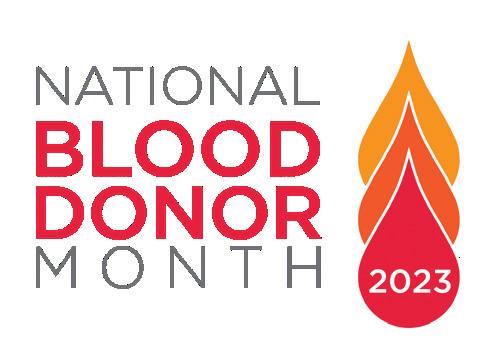
The ripple effect of the pandemic is still being felt in many areas, including blood donation. “People aren’t donating as often as before the pandemic, so we’re still experiencing periodic shortages,” says Wells. “We haven’t been able to build up a reserve, so certain blood types and products are always in high demand.”
The blood type that is most in demand is type O-negative (O-). “This is the universal blood type because it can be used in an emergency to transfuse anyone until the person’s blood type can be verified,” says Wells.

If you don’t know your type, don’t worry. When you donate, you’ll be issued a blood-donor card that will list your blood type.
HOW TO DONATE
The four basic steps to donating blood are:
1. Registration (to gather demographic information)
2. Medical interview and mini physical (to determine if the donor is suitable)
3. Phlebotomy (the actual donation, drawing blood)
4. Rest and refreshments (after blood is donated)
REQUIREMENTS FOR DONORS
To donate blood, you must:
• Be in overall good health
• Be at least 17 years old (16 with parental consent)
• Weigh at least 110 pounds (120 pounds if 16 years old)
• Present a valid photo identification with signature
For more information or to schedule an appointment to donate blood, visit www.rwjbh.org/treatment-care/blood-donation or
or call 732.235.8100 ext. 221 (New Brunswick) or 908.685.2926 (Somerset).
www.rwjuhdonorclub.org ,
Healthy Together | 16 | Winter 2023
Pictured at the groundbreaking for the new $225 million Comprehensive Cancer Center at Cooperman Barnabas Medical Center (CBMC) are (front row, from left): Susan Solometo, System Vice President for Strategy and Operations, Oncology Services, RWJBarnabas Health; Steven K. Libutti, MD, Director of Rutgers Cancer Institute of New Jersey and Senior Vice President, Oncology Services at RWJBarnabas Health; Mark E. Manigan, President and Chief Executive Officer, RWJBarnabas Health; Richard L. Davis, President and Chief Executive Officer, CBMC; Lynn Schonbraun, Campaign Co-Chair, CBMC; Bruce Schonbraun, Chairman, Board of Trustees, CBMC, and Campaign Co-Chair; Toby and Leon Cooperman, Honorary Campaign Chairs; Barry H. Ostrowsky, former Chief Executive Officer, RWJBarnabas Health; Bobbi Ostrowsky; Jennifer A. O’Neill, DNP, APN, NEA-BC, Chief Operating Officer, CBMC; Joseph Bier, Member, Board of Trustees, CBMC; Susan Garawitz, Vice President Oncology Service Line, CBMC; Alison Grann, MD, Chair, Department of Radiation Oncology, CBMC; (back row, from left): Marc E. Berson, Trustee, RWJBarnabas Health; Michael Scoppetuolo, MD, Medical Director, Cancer Center, CBMC; Russell Langan, MD, FACS, Chief of Surgical Oncology & Hepatopancreatobiliary Surgery, CBMC; Glenn Miller, Executive Vice President, Chief Development Officer, RWJBarnabas Health; Andrea Melchiorre, Member, Board of Trustees, Campaign Vice-Chair, CBMC; Thomas A. Biga, Executive Vice President, President Northwest Region, RWJBarnabas Health; and Sheila Collier, MSN, RNCMNN, Chief Nursing Officer, CBMC.

REIMAGINING
CANCER CARE
THE CANCER CENTER AT COOPERMAN BARNABAS MEDICAL CENTER USHERS IN A NEW ERA OF WORLD-CLASS CANCER CARE RENDERED WITH EXPERTISE AND COMPASSION.
RWJBH.ORG/COOPERMANBARNABAS 17
Cooperman Barnabas Medical Center
Cooperman Barnabas Medical Center (CBMC) is reimagining
cancer care. The hospital recently broke ground on the five-story, 137,000 square-foot Cancer Center at Cooperman Barnabas Medical Center on its campus. “We are celebrating the dawn of a new era in world-class cancer care,” says Richard L. Davis, the hospital’s President and CEO.
The $225 million outpatient facility, scheduled to be completed in 2025, will serve as the northern hub for the integrated oncology services offered by RWJBarnabas Health and Rutgers Cancer Institute of New Jersey, the
state’s only National Cancer InstituteDesignated Comprehensive Cancer Center.
The new center will feature medical, surgical and radiation oncology services under one roof. It will house 46 private infusion rooms, eight shortstay treatment spaces, six extendedstay treatment spaces, a garden terrace and more. In addition, the center will offer holistic support services such as a wig and prosthetic studio; a teaching kitchen focused on nutrition; and a wellness center featuring exercise, yoga and music programs.
The facility is part of the expansion
of oncology services provided by RWJBarnabas Health and Rutgers Cancer Institute of New Jersey, as well as the ongoing transformation of the medical campus. Leon and Toby Cooperman, who made a historic $100 million gift to the medical center in 2021, continue to play a key role in the hospital’s growth.
“We applaud the Cooperman Family Foundation for their long-standing support of our hospital and our entire community,” says Bruce Schonbraun, Chairman of the Board of Trustees at CBMC. “Their extraordinary and selfless generosity has enabled the



Healthy Together | 18 | Winter 2023
facility to attract world-class physicians to bring the best healthcare available to northern New Jersey.”
The medical center’s partnership with Rutgers Cancer Institute of New Jersey gives patients access to the most advanced treatment options, including immunotherapy, blood and marrow transplantation, CAR T-cell therapy and clinical trials, many of which are not available elsewhere. This is extremely important to patients who have had to travel distances to receive the latest cancer treatments.
At the core of the center’s cancer care is a focus on patients. Besides
offering the best cancer care, the center’s patient-centered approach is designed to support patients, families and caregivers through their cancer journey, from screening and diagnosis through treatment and survivorship, with knowledge, expertise and compassion.
“Breaking ground on the new Cancer Center at Cooperman Barnabas



Medical Center is the latest example of how RWJBarnabas Health and Rutgers Cancer Institute of New Jersey are reimagining cancer care for the communities we serve,” says Steven K. Libutti, MD, Director of Rutgers Cancer Institute of New Jersey and Senior Vice President, Oncology Services at RWJBarnabas Health.
For more information on the Cancer Center at Cooperman Barnabas Medical Center, visit rwjbh.org/cbmccancercenter .
LEFT PAGE: Pictured are trustees, leadership, physicians and honored guests at the groundbreaking celebrating the day.
ABOVE: Members of the Board of Trustees and leadership at the groundbreaking (top); Jeffrey and Alisa Kigner (above, left); David and Carol Sidman and Alan and Susan Hammer (above, right).
RWJBH.ORG/COOPERMANBARNABAS 19
Cooperman Barnabas Medical Center
SOUP TO NUTS
5 Foods to Keep You Healthy This Winter
Healthy foods are healthy all year long, but winter tends to be harder on our bodies and on our immune systems than more temperate seasons, so it’s important to make every protein, fat and carbohydrate calorie count. Here are five healthy foods to help sustain you until spring.
1
Oatmeal
There really is something to the idea of starting the day with a hot, wholesome breakfast—especially on a frosty morning. Oatmeal (preferably not the instant kind, which is highly processed) is a great choice. According to Registered Dietitian Deanna Schweighardt, RDN, CDCES, “It’s high in soluble fiber, which is good for heart health; it has a low glycemic index unless you load it with sugary toppings, so it won’t spike your blood sugar; and it has many nutrients, including zinc, which is important for immune function.”
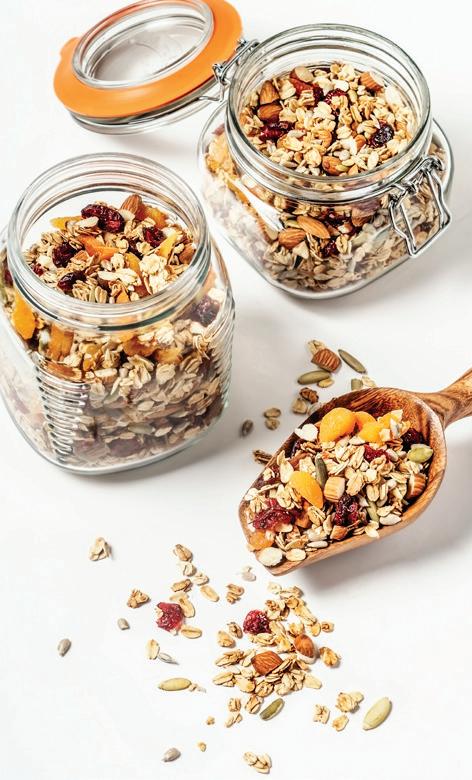

2 Nuts and Seeds
These nutrition powerhouses have it all. Besides being delicious, they’re a great source of protein, fiber and heart-healthy fats. They’re packed with vitamins and minerals. Eating nuts and seeds regularly is associated with a lower risk of high blood pressure, heart disease and cancer. They can also reduce inflammation and may help improve cholesterol. Among the healthiest nuts are walnuts, pistachios and almonds. Healthy (and fun-to-eat) seeds include pumpkin and sunflower seeds. One caveat: They’re all calorie-dense, so watch your portions.
3
Root Vegetables
These vegetables that grow under the ground are generally nutritious, delicious, low in fat, high in fiber, rich in complex carbs and packed with vitamins like A, B and C as well as minerals such as potassium, iron and manganese. Root vegetables include onions, garlic, shallots, carrots, turnips, beets and sweet potatoes.

4 Citrus Fruits

Citrus fruits are loaded with vitamin C, an important antioxidant that can help boost your immunity. Studies show it may also help lower blood pressure and reduce risk of heart disease.
“One navel orange contains 82 milligrams of vitamin C,” says Schweighardt. “The recommended daily allowance for men is 90 milligrams a day; 75 milligrams for women.” It’s best to get vitamin C from whole foods.
5 Chicken Soup
It’s not a myth: Chicken soup really does help when you’re under the weather. Why wouldn’t it? It’s got lean protein, healthy vegetables and clear broth— which can relieve nasal congestion and help you stay hydrated, too. Plus, it just tastes good and warms you up inside.

HEALTH NEWS
Healthy Together | 20 | Winter 2023
THE LOWDOWN ON SALT SUBSTITUTES
A registered dietitian weighs in.
Aliz Alaman, RDN, CDE, a registered dietitian at Cooperman Barnabas Medical Center, says there are many alternatives to salt.
Are all salt substitutes the same?
No, salt substitutes vary. The term “salt substitutes” typically refers to alternatives to salt (sodium chloride) that contain varying amounts of potassium chloride. Some salt substitutes contain no sodium chloride and all potassium chloride, while others contain a reduced amount of sodium chloride and potassium chloride. Potassium chloride has a “salty” taste, though in large amounts it may taste bitter.
Are salt substitutes versatile enough to use in recipes?
Versatility depends on the specific salt substitute and the individual’s preferences. In cooking, some people may notice a bitter taste, particularly with the sodium-free varieties. As for baking, sodium is necessary for certain chemical reactions to occur, so the sodium-free varieties do affect the final product.
Are there any side effects or health concerns regarding salt substitutes?
Yes, people with certain health conditions such as kidney disease, diabetes and heart failure may have difficulty eliminating excess potassium from their blood. Also, consumption of potassium chloride salt substitutes can raise blood potassium to unsafe levels in individuals on certain medications, such as ACE inhibitors, potassium-sparing diuretics and angiotensin-receptor blockers.
What else can be used in place of salt to season food?
There are many salt-free seasoning blends that can add flavor. Single spices like black pepper, garlic and cumin can add flavor without sodium, as can fresh herbs like parsley, dill and basil. Many herbs and spices have anti-inflammatory and other health benefits.

IS CAFFEINE SAFE FOR CHILDREN AND TEENS?
Here’s the answer, according to a CBMC pediatrician.
“Caffeine is a stimulant of the central nervous system, and there is no proven safe dose for children and teens,” says pediatric endocrinologist Dennis Brenner, MD, Chair of Pediatrics at Cooperman Barnabas Medical Center. “While small amounts of caffeine— such as the caffeine found in some soft drinks—may be hard to avoid, intake should be limited, especially in young children.” So if you don’t want your child bouncing off the walls—let alone having heart palpitations or jitters, being irritable and having trouble falling asleep—it’s best to watch their caffeine intake.
“Limiting caffeine intake in teens is more difficult,” says Dr. Brenner. Most caffeine consumed by children and teens comes from iced tea, soda and other beverages, as well as chocolate, gum and snacks. Some teens also drink coffee or hot and cold beverages containing caffeine. These should not be consumed in excess. “Energy drinks are an especially unhealthy and potentially dangerous source of caffeine and should be avoided,” says Dr. Brenner. Talk to your child’s pediatrician if you are concerned about their caffeine intake.
Cooperman Barnabas Medical Center RWJBH.ORG/COOPERMANBARNABAS 21
COOPERMAN BARNABAS MEDICAL CENTER’S CARDIOLOGY MILESTONE

Cardiologists at Cooperman Barnabas Medical Center (CBMC) recently completed their 500th Watchman™ procedure for patients with atrial fibrillation (AFib). For those who have AFib not caused by a heart valve problem (also known as nonvalvular AFib), the Watchman device offers a safe and convenient alternative to blood thinners. The hospital first performed the procedure in 2017 and is one of only
two facilities in northern New Jersey to have reached this milestone.
“Hitting this milestone is an incredible accomplishment for our cardiology team,” says David P. Dobesh, MD, an RWJBarnabas Medical Group cardiac electrophysiologist. “It’s a testament to the high level of expertise offered by our imaging and implanting cardiologists. It also demonstrates the outstanding outcomes and improved quality of life they’ve been able to achieve for patients with AFib.”
Approximately 7 million Americans have AFib, a condition that affects the heart’s ability to pump blood normally, causing blood to pool in the left atrial
To find out more about cardiac services at Cooperman Barnabas Medical Center, please call 973.322.5244 or visit www.rwjbh.org/heart
appendage (LAA), a sac-like pocket located in the wall of the heart’s top chamber, where a blood clot may form. When a blood clot in the LAA travels to another part of the body, it can cut off the blood supply to the brain, causing a stroke.
“The average person with AFib is about five times more likely to suffer a stroke than someone with a regular heartbeat,” says Dr. Dobesh.
The Watchman, which fits into the LAA, is a small (about the size of a quarter), parachute-shaped device that is composed of a self-expanding, nickel-titanium frame with a polyester fabric cover. It is implanted through the skin and is designed to permanently close off the LAA to keep blood clots from entering the bloodstream. “The Watchman has been a game changer in how we treat AFib,” says Dr. Dobesh. “It reduces the risk of stroke without the increasing risk of bleeding from blood thinners.”

During the procedure, which takes about an hour and is performed under general anesthesia, a catheter is threaded through a blood vessel near the groin and up through the heart to the LAA. “The recovery is very quick, and most patients will be back to normal that week,” says Dr. Dobesh. After the procedure, patients are required to remain on blood thinners for 45 days, during which time the heart will grow its own new tissue over the Watchman to create a permanent seal. A follow-up echocardiogram or CT scan will be performed to confirm that the LAA is sealed properly. The device is permanent and never needs to be replaced.
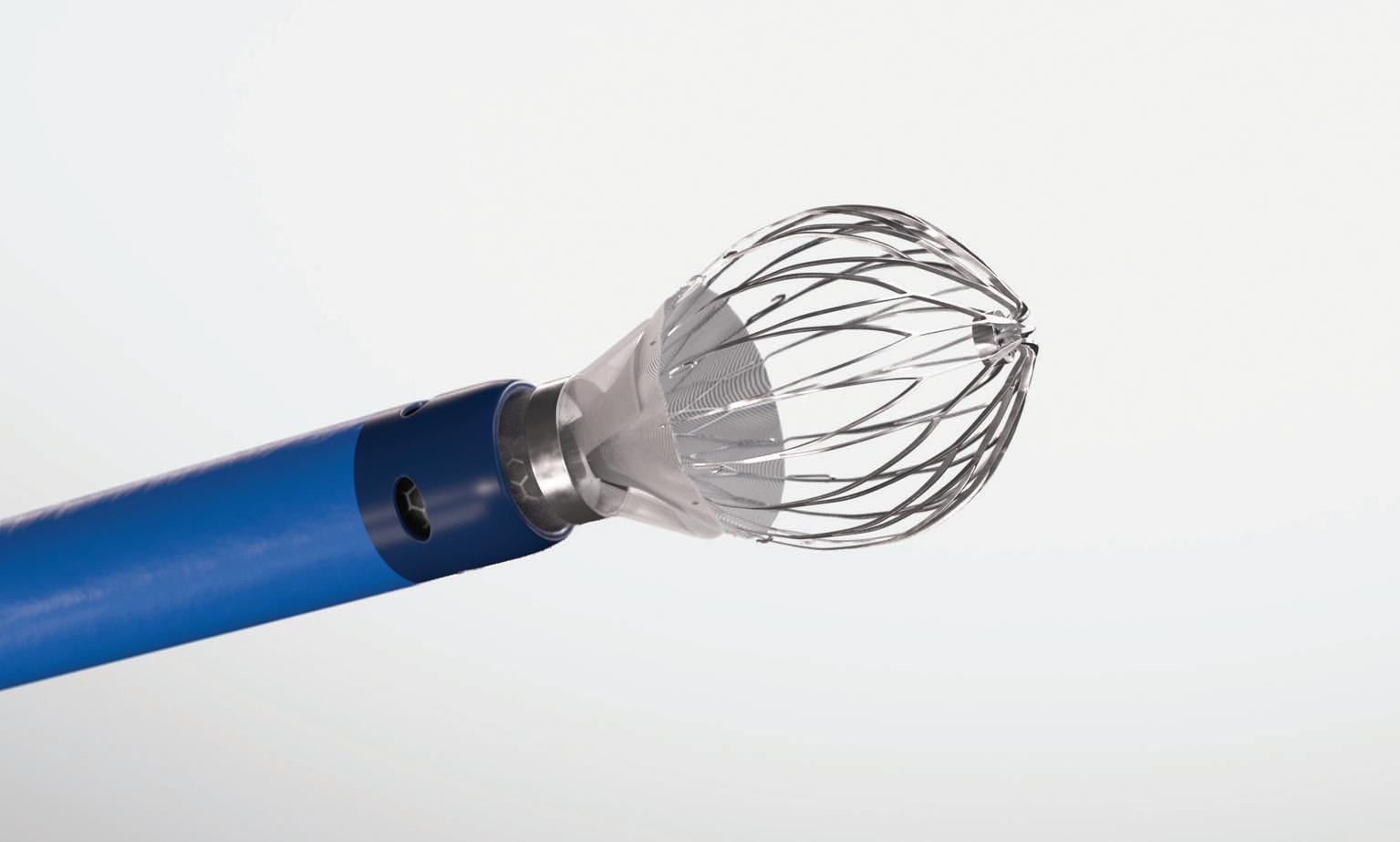 The Watchman FLX (below) is implanted with an access sheath (left) inserted through the femoral vein.
DAVID P. DOBESH, MD
500 CBMC PATIENTS WITH ATRIAL FIBRILLATION (AFIB) HAVE RECEIVED THE POTENTIALLY LIFESAVING WATCHMAN™ IMPLANT.
The Watchman FLX (below) is implanted with an access sheath (left) inserted through the femoral vein.
DAVID P. DOBESH, MD
500 CBMC PATIENTS WITH ATRIAL FIBRILLATION (AFIB) HAVE RECEIVED THE POTENTIALLY LIFESAVING WATCHMAN™ IMPLANT.
Healthy Together | 22 | Winter 2023
AN ORTHOPEDIC INNOVATOR DR.
Sometimes in medicine, as in life, timing is everything. Nobody knows this better than Frank Liporace, MD, Chairman of Orthopedics at Cooperman Barnabas Medical Center (CBMC), who trained for his career in orthopedic surgery in the late 1990s and early 2000s, a time of incredible advances within his chosen field.
“The 1990s and early 2000s saw the biggest growth in orthopedics, both in surgical techniques and in the philosophy of how to treat different medical problems,” he says. “I was fortunate to train with many of the icons in our field who were leading those pivotal changes.”
Dr. Liporace learned from his mentors and followed in their footsteps, subsequently forging his own path, not just as a top orthopedic surgeon, but as an innovator, designer and inventor. Working with design teams that include surgeons, engineers and marketing executives, Dr. Liporace—an internationally recognized expert who has given more than 400 lectures worldwide and whose work has been published in more than 140 peer-reviewed journals—has helped create
surgical hardware and techniques to make orthopedic surgery easier and more efficient and to improve the way patients receive orthopedic care.
“Everyone who suffers a broken bone wants to get better as quickly as possible, return to the way they were before and recover with the least chance of complications,” says Dr. Liporace. “That’s what innovations in orthopedics bring to people locally, nationally and internationally.”

REVOLUTIONIZING CARE FOR HIP AND LEG FRACTURES
One of Dr. Liporace’s passions is improving care for hip fractures, an orthopedic injury that impacts more than 300,000 people in the U.S. each year. Most hip fractures occur in people over age 65, many of whom already have several existing and serious health conditions. In the worst cases, hip fractures can be fatal.
Among the first innovations Dr. Liporace helped create is a surgical system that strengthens a fixed hip fracture so patients can bear weight on their repaired hip immediately, increasing their chances for a successful outcome.
“The system makes the surgery technically easier for surgeons and helps match a patient’s anatomy and biomechanics better,” says Dr. Liporace. Additionally, through the accelerated care hip fracture program that Dr. Liporace started at CBMC, “We’ve dramatically decreased morbidity and mortality, the incidence of blood clots and narcotic usage after hip fracture. And we’ve increased the number of people who go home directly from the hospital instead of going to a rehabilitation facility.”
Other surgical implants he has released and are about to be released include a nail system for treating proximal humerus fractures, tibia fractures, femur fractures and ankle arthritis; a plating system for proximal humerus fractures; and a revision knee replacement system for the most complex failed knee replacements and situations of catastrophic bone loss.
People who suffer leg fractures just above the knee joint— called distal femur fractures—have similar postsurgical concerns. Dr. Liporace helped design an enhanced surgical technique that uses a combination of surgical nails and plates to fix these types of fractures and help patients ambulate faster and recover quicker after surgery.
He also worked with a team that created a system of plates and screws to help improve surgical results for people who suffer broken bones in areas around the implants of a total hip replacement.
“What’s innovative today will be outdated in the future,” Dr. Liporace says. “It’s our responsibility to lead by example and show the next generation of surgeons how they can improve orthopedic care even further.”
make an appointment with Dr. Liporace, call 973.322.7005
Dr. Frank Liporace’s surgical hardware designs and innovations are intended to make things easier for both surgeons and patients. To
CREATE SURGICAL HARDWARE AND TECHNIQUES TO IMPROVE PATIENT CARE. Cooperman Barnabas Medical Center RWJBH.ORG/COOPERMANBARNABAS 23
FRANK LIPORACE HELPS
94 Old Short Hills Rd., Livingston, NJ 07039
We have top cardiovascular specialists, researchers and innovative treatments. And the passion to

New Jersey’s top TAVR program.
Cooperman Barnabas Medical Center has a passion for heart health. Our cardiac specialists, who diagnose and treat all cardiac conditions, lead our multidisciplinary team, including Magnet-recognized nurses. We’re at the forefront of innovation in critical and surgical cardiac care, including transcatheter aortic valve replacement (TAVR) and transcatheter mitral valve replacement. And, as the state’s largest cardiac rhythm disorder center, we offer the largest left atrial appendage closure program with the newest device for treatment. It’s all part of our dedication to every heart in our community. Learn more at rwjbh.org/tavr
match.
NON PROFIT U.S. POSTAGE PAID
Permit #324
Harrisburg, PA
























 LEFT: (From left) Ellen Loventhal, Dara Orbach, Suzanne Unger, Lori Gelman, Toba Grossbaum and Hyla Weiss at Reason to Rock. RIGHT: Michael Scoppetuolo, MD, Medical Director, The Cancer Center at CBMC; Alan Garten, MD, Chairman, Radiology; and Bruce Schonbraun, Chair, Board of Trustees, CBMC.
TOP: The starting line at Miracle Walk 2022. BOTTOM: (From left)Richard Davis, President and CEO, Cooperman Barnabas Medical Center; Kamtorn Vangvanichyakorn, MD, Medical Director, Neonatology, with Jonathan and Haley Hirschmann, founders of Miracle Walk.
LEFT: (From left) Ellen Loventhal, Dara Orbach, Suzanne Unger, Lori Gelman, Toba Grossbaum and Hyla Weiss at Reason to Rock. RIGHT: Michael Scoppetuolo, MD, Medical Director, The Cancer Center at CBMC; Alan Garten, MD, Chairman, Radiology; and Bruce Schonbraun, Chair, Board of Trustees, CBMC.
TOP: The starting line at Miracle Walk 2022. BOTTOM: (From left)Richard Davis, President and CEO, Cooperman Barnabas Medical Center; Kamtorn Vangvanichyakorn, MD, Medical Director, Neonatology, with Jonathan and Haley Hirschmann, founders of Miracle Walk.










 ROBERT A. GRAEBE, MD
LENA L. MERJANIAN, MD
NICOLE M. MONTERO LOPEZ, MD
ROBERT A. GRAEBE, MD
LENA L. MERJANIAN, MD
NICOLE M. MONTERO LOPEZ, MD























 The Watchman FLX (below) is implanted with an access sheath (left) inserted through the femoral vein.
DAVID P. DOBESH, MD
500 CBMC PATIENTS WITH ATRIAL FIBRILLATION (AFIB) HAVE RECEIVED THE POTENTIALLY LIFESAVING WATCHMAN™ IMPLANT.
The Watchman FLX (below) is implanted with an access sheath (left) inserted through the femoral vein.
DAVID P. DOBESH, MD
500 CBMC PATIENTS WITH ATRIAL FIBRILLATION (AFIB) HAVE RECEIVED THE POTENTIALLY LIFESAVING WATCHMAN™ IMPLANT.










